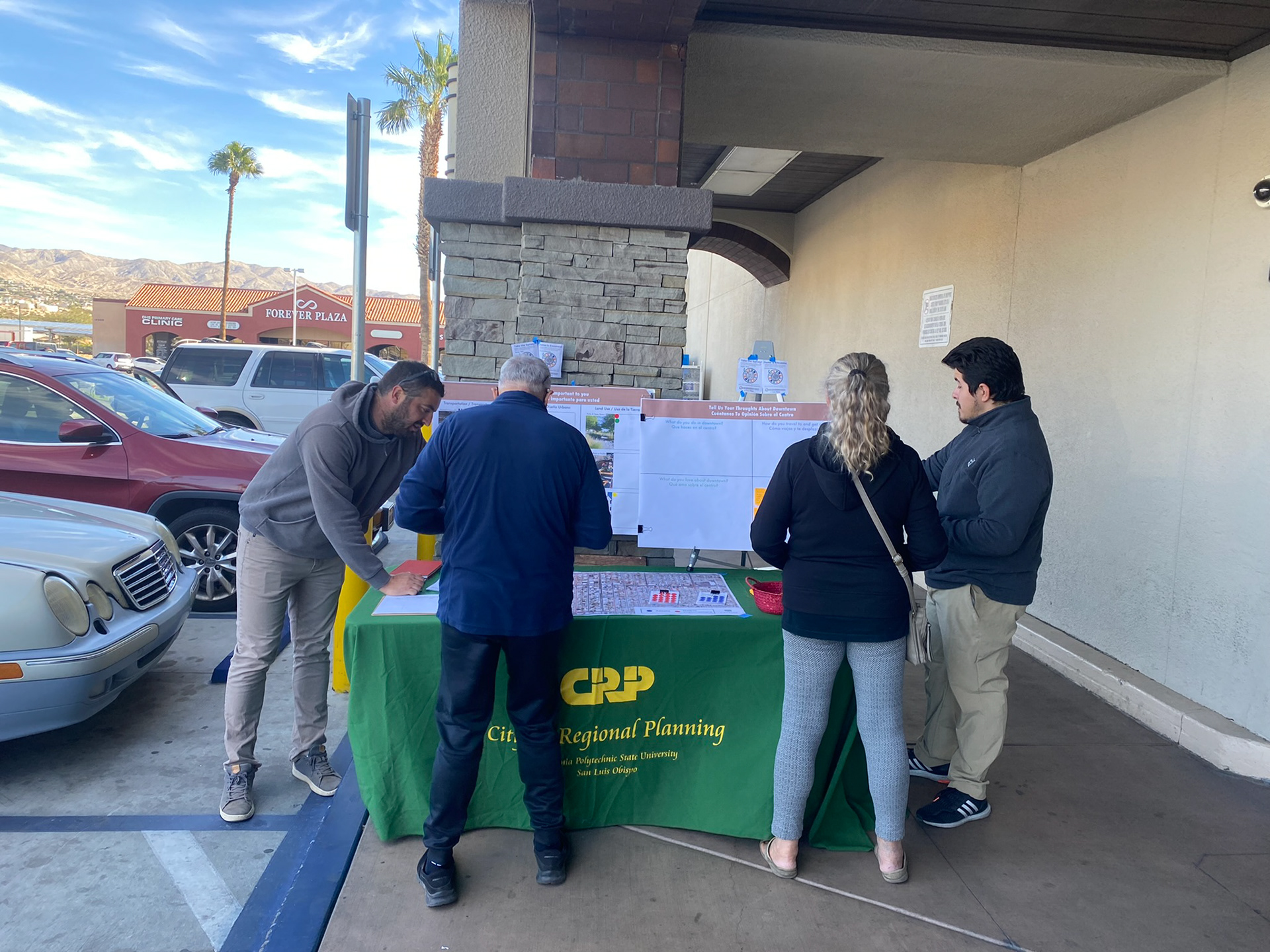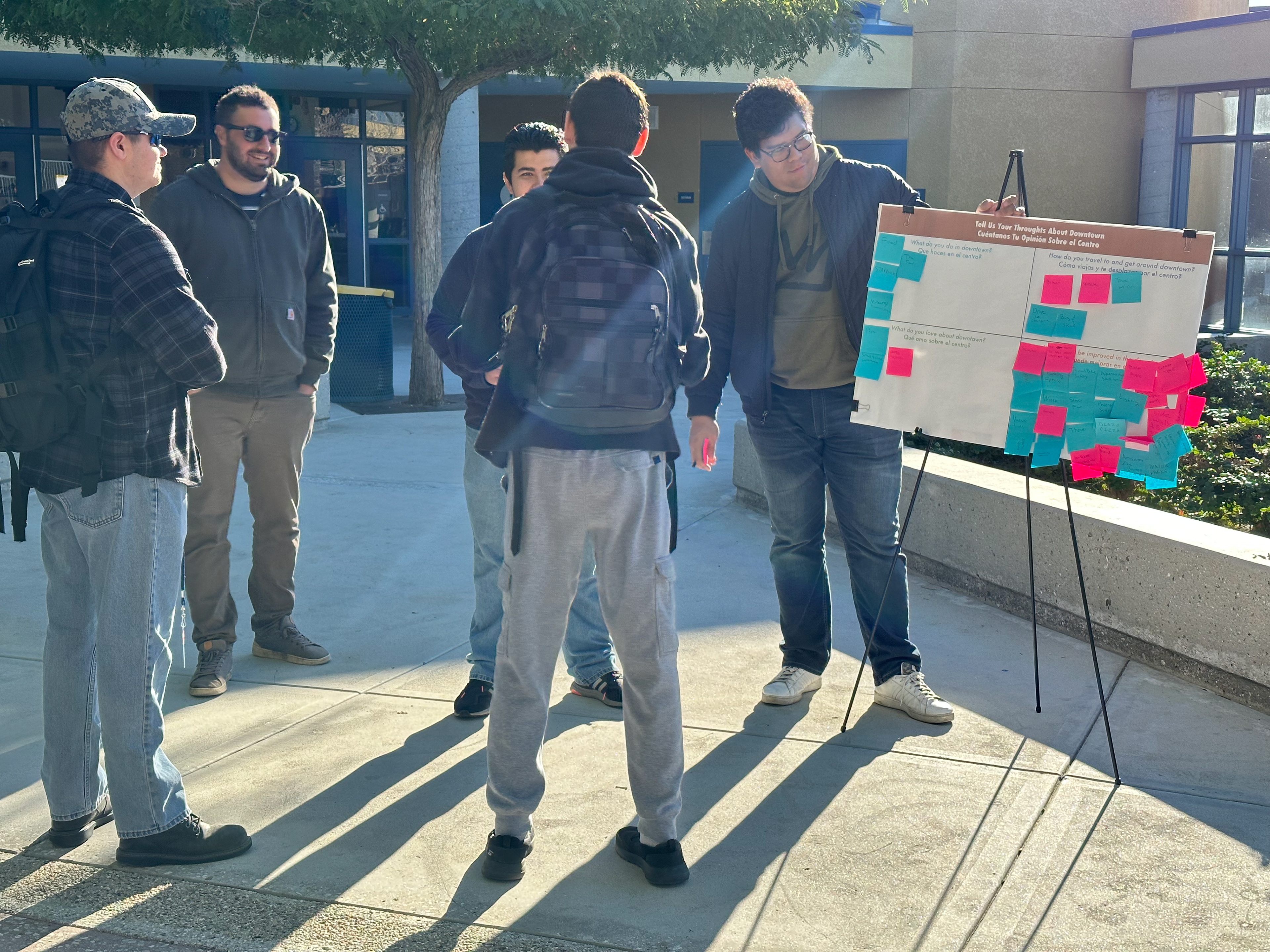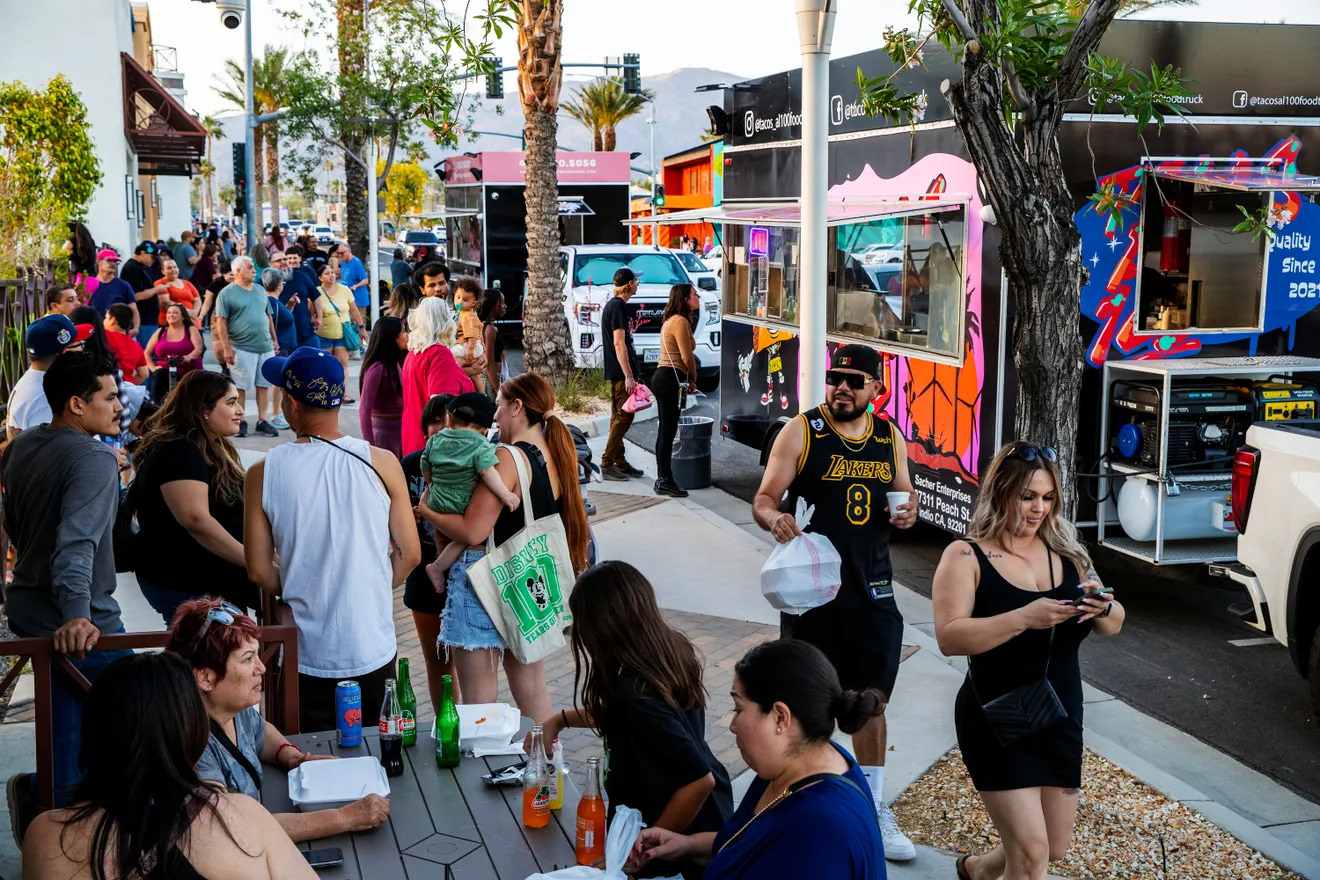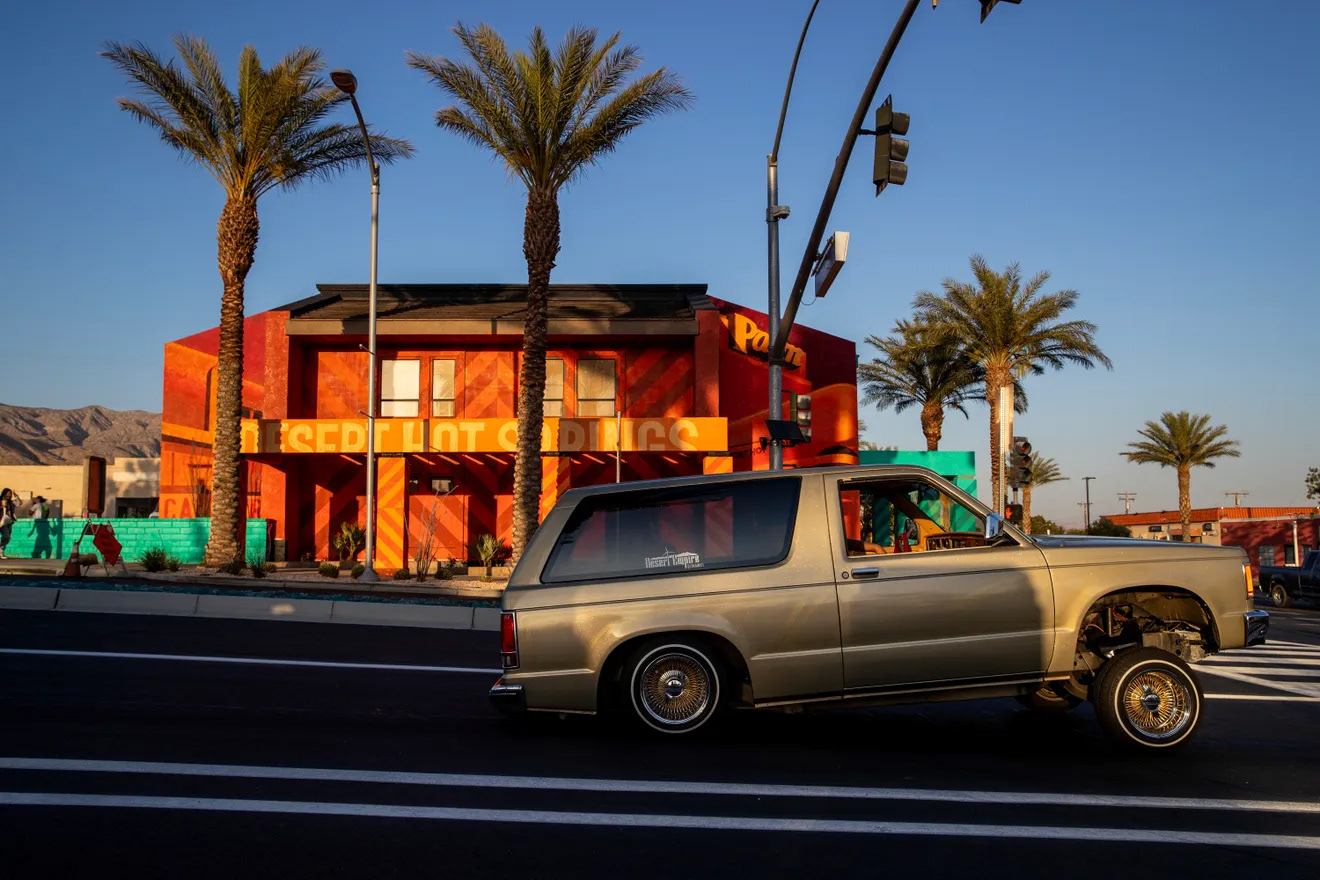What Makes a Great Place?
Desert Hot Springs, located at the northern edge of the Coachella Valley, is a community uniquely poised for transformative placemaking. Great places don’t happen by accident however—they are the result of deliberate and sustained efforts by those who live and work there. As part of a year-long planning initiative, the Downtown Vision outlines incremental improvements that develop community assets. The centerpiece of this effort is a "placemaking playbook," that offers specific steps to activate underutilized spaces, provide programming that supports economic development, and build towards permanent improvements that collectively reinforce the community's unique identity and values.



Community Outreach
The City and Regional Planning Department at Cal Poly holds an annual second-year masters studio over the course of two quarters (20 weeks). Work for Desert Hot Springs studio began in September of 2022 which included a collective effort to produce an Existing Conditions Report, Community Outreach Report, and a Concept Plan for the downtown. Outreach was conducted over two site visits. For the first visit, tables were set up at two grocery stores and the community center to directly engage with the public. During this time a street audit was also conducted, assessing the quality of buildings, frontages, and pedestrian amenities that were included in the Existing Conditions Report. On the second visit, a community-wide visioning event was held at City Hall with Downtown stakeholders, including residents, small business owners, and City staff–concluding with the vision statements produced below. Further outreach conducted at Desert Hot Springs HIgh School by interviewing and allowing students to post ideas on visioning boards. As further research for the Placemaking Playbook, I conducted a photographic inventory of downtown that included personal interviews with downtown Desert Hot Springs businesses.
Prioritizing Policies for Placemaking
For years, Desert Hot Springs has faced challenges in filling vacant storefronts and developing empty lots within its downtown core along Pierson Boulevard. While growth in cannabis, tourism, and real-estate have been a recent boon for the City’s finances – the City has built a new city hall and made streetscape improvements at the intersection of Palm and Pierson Boulevard – this has largely failed to materialize in large-scale private investment downtown.
Start-up costs can be prohibitive for new businesses and traditional financing mechanisms may not support the types of development the community values. The result is a discontinuity in downtown space that can support economic and social development.
The basis of this project is derived from the Project for Public Spaces, which establishes core components needed for effective placemaking. These components were categorized into three groups to prioritize policies: (1) “Lack of,” (2) “Need for,” and (3) “Abundance of.” A “lack” identifies areas where the community could benefit from more resources, a “need” highlights essential elements, and an "abundance" identifies key assets that the community can leverage for placemaking.
Phase 1: Building Sociability
According to Project for Public Spaces, "Sociability can be one of the most difficult qualities for a place to achieve because it results from complex social mechanisms that are not easily quantified or controlled. However, when it is achieved, it becomes an unmistakable feature of a place."
Throughout outreach we encountered numerous examples of sociability within Desert Hot Springs, but participants also expressed a degree of fatigue with the planning process. Planning fatigue does not imply that public officials in Desert Hot Springs are untrustworthy, quite the opposite. City staff and public officials expressed a genuine enthusiasm and gratitude for the relationships they have within the community.
Ultimately, building trust takes time. As Desert Hot Springs seeks to invest in improvements downtown with new cannabis tax dollars, a core focus must continue to be building relationships. Sociability is difficult to achieve, and low-cost, high-impact projects can break down social barriers and help induce investment.
Phase 2: Activating Vacant Spaces
Activities are the reason people visit a place, and the reason they return. Streetscape enhancements can be impactful, but absent of programming, they alone are not enough to foster a sense of place or civic pride.
Active public spaces are a reflection of their community because they are accessible to the people who use them. For a place to be accessible it also needs to be useful. A useful place first considers the physical and economic barriers that individuals may face, then provides infrastructure and amenities to support them.
Temporary programming expands economic access by encouraging experimentation and flexibility, testing ideas and concepts before committing to expensive long-term investments. Creating space for informal entrepreneurship and hosting regularly-scheduled downtown events, such as farmers' markets or pop-up markets, can activate underutilized spaces.
In Desert Hot Springs, this approach can build on successful events like "Fridays on Pierson" and the vendor culture that is already present (pictured below). These types of events serve as a springboard for successful pop-ups to transition into permanent downtown locations, filling empty storefronts while supporting and strengthening local businesses that reflect the community's identity.

Photo Credit: Taya Gray/The Desert Sun

Photo Credit: Taya Gray/The Desert Sun

Photo Credit: Taya Gray/The Desert Sun
Phase 3: Permanent Improvements
Permanent infrastructure enhances community life by addressing the physical needs of downtown users. In the summertime, temperatures routinely exceed triple digits and simple features like shade structures, drinking fountains, and vegetation provide protection from direct sunlight and lower ambient temperatures on the sidewalk.
Beyond heat mitigation, permanent improvements must also reinforce the economic access established in Phase 2. Future streetscape configurations should be multi-faceted to accommodate temporary programming, changing demand, and usability—including safety. Ramblas, like those in Barcelona or recently installed in Lancaster, accommodate temporary events, can serve as parking during off-hours, and narrow traffic lanes to slow vehicle speeds.
For, like ramblas, like those in Barcelona, or recently installed in Lancaster, can ___ This provides the diversity of people and authentic identity needed to successfully activate public space.
Opportunity to build on eclectic desert art made from salvaged materials.
Phase 4: Public Space Network
Over time, permanent improvements can be connected to form a network of public spaces.